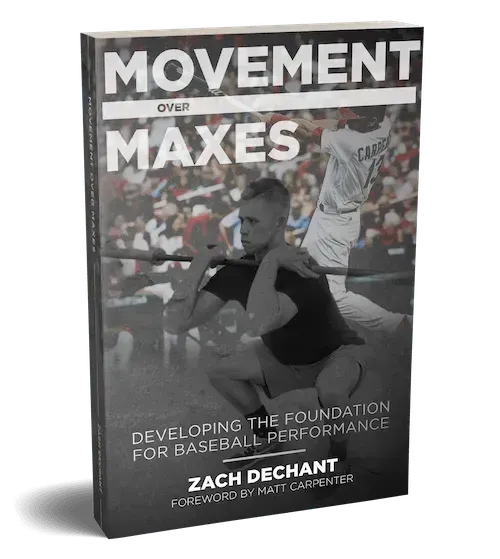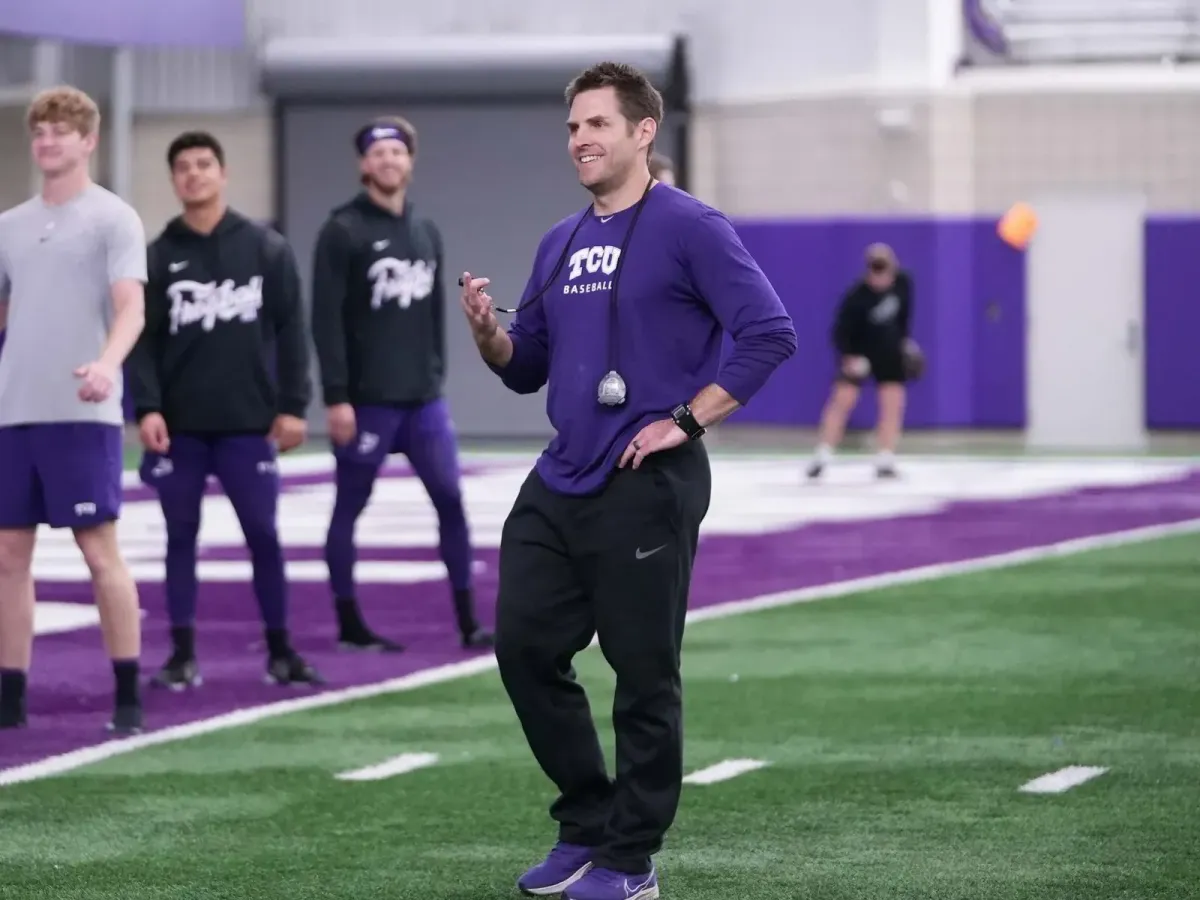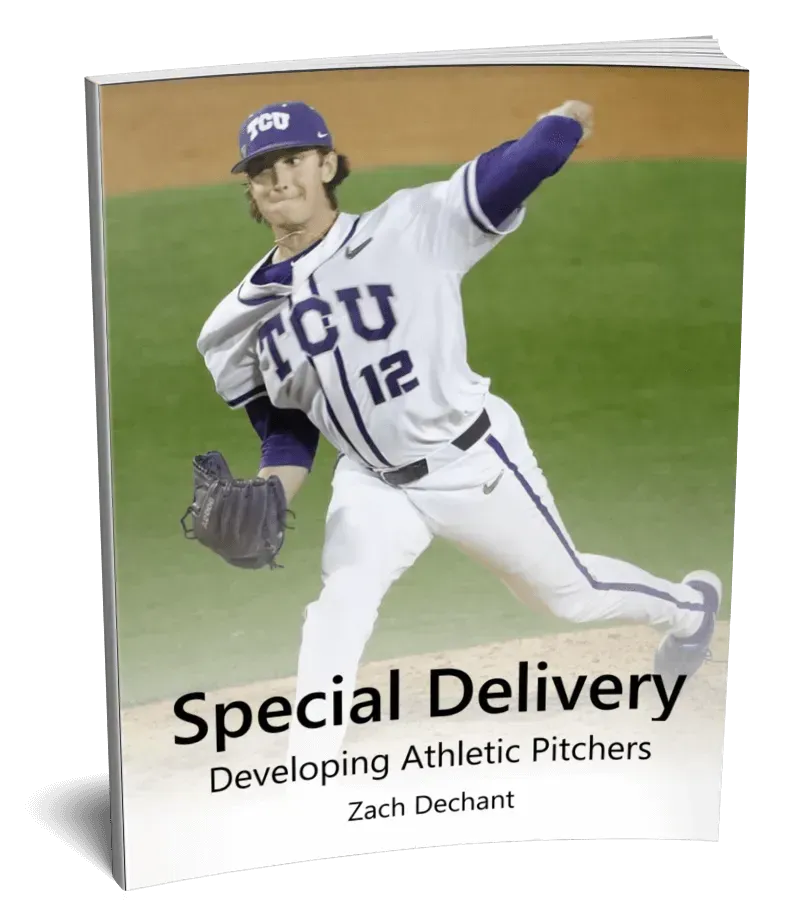Movement Over Maxes
Developing The Foundation for Baseball Performance

"If you want to improve your program and give your athletes a winning edge, this book is a must!"
Movement Over Maxes is a Foundational Program that serves as the starting point for any athlete. It functions as a guide for all coaches to begin to understand and implement basic movement patterns with a long-term development approach.
This was created for the coach who wears every hat for their program... The coach who mows the grass, drags the infield, handles the equipment, AND trains the athletes! This is for the coach who devotes their life to not only creating better baseball players, but growing boys into men through the sport.

The Need For An Analysis
Blog contribution is written by current Coach with TCU Sports Performance, Andrew Behnam.
There are many factors that make up the intricacies of a strength and speed program for a specific sport. What you see on paper is a neatly designed regimen with strategically placed exercises ready for a team of athletes to attack it with relentless intent. What you don’t see on that paper is all of the behind-the-scenes efforts that went into making up the components of that program. Part of those behind-the-scenes efforts include creating what is called a needs analysis. In order give yourself the best chance at reducing the likelihood of injuries for your team, conducting a needs analysis is a great place to start when first designing a strength and speed program.
What Is A Needs Analysis?
A needs analysis, at its core, is a detailed description of a particular sport that includes information like common injuries, various movements made in the sport, time-motion demands, avg HR, total distance covered, etc. If properly detailed, a needs analysis can provide all of the necessary data a performance coach needs to get their athletes prepared for the demands of sport. To ensure that the sport is detailed to its entirety, the needs analysis is organized into four sections:

BIODYNAMICS
In every sport, there is a different combination of kinetic and kinematic movements needed for an athlete to be successful. These combinations dictate what exercises should be implemented in a strength and speed program. Created by Yuri Verkoshansky, this structure addresses the process of selecting exercises for a sport:
a) groups of muscles predominantly involved in the work
b) amplitude (ROM) and direction of movement
c) magnitude of effort and time of its development
d) accentuated part of the movement ROM
e) muscle work regime
If we look at two different sports like golf and basketball for example, we can see how they are both biodynamically different. Golf is a transverse plane dominated sport that focuses on a singular rotation while basketball is a sport that requires multi-directional speed in the frontal and sagittal planes. As stated in Verkoshansky’s first point, the groups of muscles that are predominantly involved in the work for both of these sports are different. The common goal of every strength program should be to build a more robust athlete, albeit you need to train both of these respective athletes in different ways.
BIOENERGETIC
Considered one of the more important aspects of a needs analysis, the bioenergetic section addresses the time-motion demands of the sport you are programming for. Depending on the amount of technology you have within your team/organization, this portion can be as detailed as you want. If you don’t have technology to help you – that’s ok. A basic trick you can do to combat this is to go on youtube and watch an athlete compete while using a stopwatch to record work:rest ratios. We are very fortunate that at TCU we have GPS monitors that collect information like average heart rate, peak HR, distance traveled, # of accelerations/decelerations, etc. From there we can program our training sessions to match these demands.
If you dive deeper past the surface of bioenergetics in the team setting, you will also realize there is a distinct difference positionally. If time and resources allow, you might consider training your wide receivers separately from your lineman due to the variance in distances traveled by both positions.
BIOMOTOR

Kovacs M. S. (2006). Applied physiology of tennis performance. British journal of sports medicine, 40(5), 381–386.
If every sport required just strength, it would be easy to train athletes; however, this is not the case. In order to be a well-rounded, robust athlete, you need an array of bio-motor qualities with some qualities more heavily trained than others. The bio-motor categories can be broken down into six main abilities, and what we call the 5 S’s: strength, speed, stamina, suppleness, and skill. Having a firm understanding of what your sport needs in terms of bio-motor abilities will be the key to your programming focus. Each category of bio-motor abilities, with the exception of skill, have field work and weight room based exercises that fulfill the needs of athletes to be ready for sport.
INJURIES ANALYSIS
You can never completely mitigate injuries occurring in sport no matter how good your strength and speed program is. With athletes being in the weight room 1 out of the 24 hours in the day, there are so many more factors that play a role into this category. However, we can do our best to ensure the athletes have the greatest chance to reduce common injuries during the short time they are with us. Through reverse engineering the sport, we can hone in on prepping the tissue and musculature that is placed under the greatest amounts of stress. This portion of the analysis can provide performance coaches with a plethora of information that they can use to better their exercise selection.
The more detailed you can make your needs analysis in turn, the more “sport specific” your program will be. Breaking down the intricacies of a sport and categorizing it into these sections can help prevent the performance coach from creating a “one size fits all” program. Often times, creating a needs analysis gets overlooked and essentially, the first step in programming is passed over. Follow these steps for creating a needs analysis and make sure you are setting your athletes, and yourself up in the best position for success.
Andrew Behnam is currently a strength and conditioning coach at TCU working with the baseball team. Before arriving at TCU, Andrew pitched in college for 4 years, and made stops at Millersville University and Villanova University where he worked as a performance coach. You can follow Andrew on social media:
Instagram – https://www.instagram.com/ajbehnam1/
Twitter – https://twitter.com/ajbehnam1?lang=en
CONNECT WITH ZACH ON TWITTER
ABOUT ZACH DECHANT
Zach has been in place since 2008 at TCU and is the current Assistant Athletic Director of Human Performance. He oversees the development of Baseball. Alongside those priorities he also handles the development and implementation of the TCU Sports Performance Internship Program that has been in place for over 15 years. Over that time the internship program has encompassed 40+ semesters and 250+ intern coaches that have moved on to all levels of professional, collegiate, high school, and private strength and conditioning.
During baseball off-seasons, Coach Dechant trains a group of 30+ current MLB / MiLB Frogs. The pro Frogs spend 4 months back on campus training for the upcoming season...


©️ 2024

